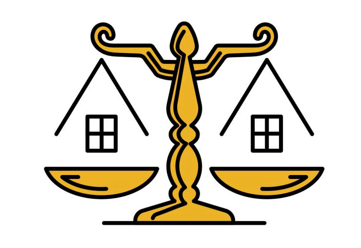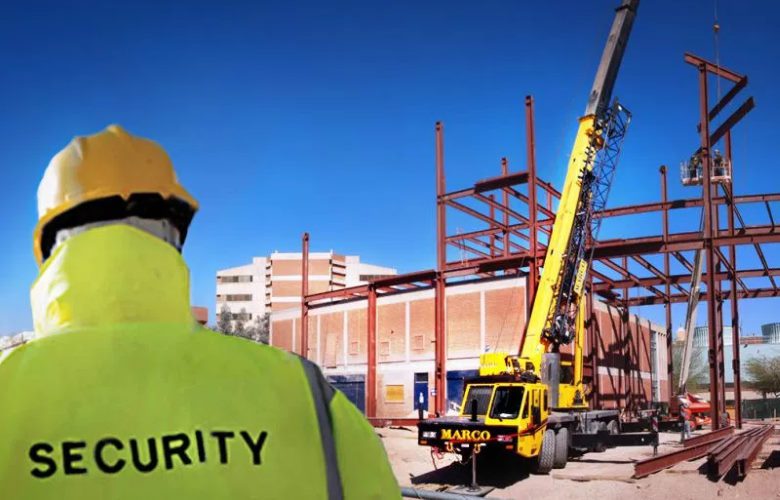
Empowering Safety: How Nigerian Construction Can Achieve Unbreakable Security Standards
Introduction
In Nigeria’s rapidly growing construction industry, ensuring safety and security is paramount. The complexities of construction projects, coupled with Nigeria’s unique environmental, economic, and social factors, create a challenging landscape for maintaining high safety and security standards. This article delves into the critical aspects of addressing safety and security in Nigerian construction, offering insights into best practices, regulatory requirements, and strategies to enhance project outcomes.
The Nigerian construction industry is a cornerstone of national development—fueling urbanization, infrastructure growth, and employment across diverse sectors. With megaprojects such as high-rise commercial buildings, sprawling residential estates, expressways, bridges, and energy facilities springing up across the country, Nigeria’s construction sector is undoubtedly booming. However, as opportunities abound, so do risks—particularly those tied to safety and security. These twin pillars, when not adequately addressed, can cause catastrophic consequences not only in terms of human life but also in terms of economic cost, legal liabilities, and reputational damage. Therefore, addressing safety and security in Nigerian construction is not merely a regulatory obligation; it is a critical enabler of long-term, sustainable success.
This article aims to delve deeply into the pressing need for robust safety and security standards within Nigeria’s construction ecosystem. It explores the realities of current practices, the consequences of neglect, and actionable frameworks to enforce high-performance safety norms in both public and private sector projects. From the overlooked safety helmets on construction sites to insufficient emergency protocols, each lapse can potentially escalate into full-blown disaster. Sadly, such incidents are far too common and usually preventable.
The call for change is clear. The frequency of accidents in Nigerian construction—ranging from building collapses to machinery-related injuries—reflects systemic failures, including poor regulatory enforcement, inadequate training, and lack of accountability. In 2022 alone, numerous media headlines screamed of yet another collapsed building in Lagos, another tragic worker death in Abuja, another family left homeless in Port Harcourt. These are not isolated events—they represent a larger national crisis that must be addressed.
The safety culture in Nigerian construction has traditionally been reactive rather than proactive. Many developers view safety as an expense rather than an investment. Risk assessments are often neglected. Protective gear is considered optional. Even simple guidelines—like scaffolding stability checks, or emergency evacuation drills—are routinely ignored. However, in today’s modern and competitive construction landscape, such negligence is not just archaic; it is unacceptable.
Security presents another critical dimension. Construction sites, especially in urban areas, are often targets for vandalism, theft, and unauthorized access. In high-risk regions, the threat of kidnapping or sabotage even further complicates matters. How can construction firms assure investors and stakeholders that their sites, staff, and capital are secure? Integrating modern security systems—surveillance cameras, perimeter fencing, biometric access, and mobile patrols—is no longer a luxury; it is a necessity.
The challenge, however, isn’t lack of knowledge. Nigeria boasts numerous engineering and safety institutions—like the Council for the Regulation of Engineering in Nigeria (COREN), Nigerian Institute of Building (NIOB), and Federal Ministry of Works and Housing—which have safety protocols that are internationally benchmarked. Yet, compliance remains dismal. Why?
Inconsistent enforcement, corruption, underfunded safety inspection departments, and a lack of public awareness all conspire to undermine even the most well-intentioned policies. But all is not doom and gloom. Several promising initiatives and case studies have emerged showing that with strong leadership, strategic investment, and multi-stakeholder collaboration, the tide can be turned.
Addressing safety and security in Nigerian construction demands a multidisciplinary approach—law, engineering, policy, human resources, and finance must all align. From embedding Health, Safety & Environment (HSE) standards into contracts, to mandatory safety audits, to offering continuous professional development in safety training—change is possible. Indeed, it is essential.
The Imperative of Safety and Security in Nigerian Construction
1. Risk Mitigation and Compliance
-Overview:
Safety and security in construction are crucial for mitigating risks related to accidents, theft, and project delays. Compliance with safety regulations not only protects workers but also ensures the integrity of construction projects.
– Impact:
Addressing safety and security helps prevent accidents and injuries, reduces financial losses due to theft or damage, and ensures adherence to legal and regulatory standards.
2. Enhancing Project Efficiency
– Overview:
Effective safety and security measures contribute to smoother project execution by reducing disruptions and ensuring that projects stay on schedule.
– Impact:
By maintaining high safety standards, construction projects can avoid delays caused by accidents or security breaches, leading to timely completion and cost savings.
3. Building Trust and Reputation
– Overview:
Adhering to safety and security standards builds trust with clients, stakeholders, and the public. A strong reputation for safety enhances a company’s credibility and competitive edge.
– Impact:
Companies known for their commitment to safety and security are more likely to attract clients, secure contracts, and establish long-term business relationships.
Key Safety and Security Challenges in Nigerian Construction
1. Workplace Accidents and Injuries
– Challenge:
Construction sites are prone to accidents and injuries due to factors such as inadequate safety gear, improper training, and unsafe working conditions.
– Solution:
Implement comprehensive safety protocols, including regular training for workers, the provision of personal protective equipment (PPE), and strict adherence to safety standards. Conduct regular site inspections to identify and address potential hazards.
2. Theft and Vandalism
– Challenge:
Theft and vandalism are significant concerns on construction sites, leading to financial losses and project delays.
– Solution:
Enhance site security by installing surveillance cameras, employing security personnel, and implementing access control measures. Secure valuable materials and equipment in locked storage areas.
3. Regulatory Compliance
– Challenge:
Navigating Nigeria’s complex regulatory environment can be challenging, with varying standards and requirements across different regions.
– Solution:
Stay informed about national and regional safety regulations, including the Occupational Safety and Health Administration (OSHA) standards and local building codes. Ensure that all safety and security measures comply with legal requirements.
4. Environmental and Weather-Related Risks
– Challenge:
Nigeria’s diverse climate and environmental conditions can pose risks to construction projects, including flooding, extreme temperatures, and soil instability.
– Solution:
Conduct thorough site assessments to understand environmental risks. Implement measures such as proper drainage systems, weather-resistant materials, and soil stabilization techniques to mitigate these risks.
5. Workforce Management
– Challenge:
Managing a diverse workforce with varying levels of skill and experience can impact safety and security on construction sites.
– Solution:
Provide ongoing training and certification for workers to ensure they are knowledgeable about safety procedures. Implement clear communication channels and promote a culture of safety on-site.
Regulatory Framework for Safety and Security in Nigerian Construction
1. Occupational Safety and Health Administration (OSHA) Standards
– Overview:
OSHA standards provide guidelines for workplace safety and health, including construction-specific regulations.
– Relevance:
Adherence to OSHA standards ensures that construction sites meet safety requirements related to equipment, training, and hazard management.
2. The National Building Code (NBC)
– Overview:
The National Building Code outlines construction standards, including safety measures and structural integrity requirements.
– Relevance:
Compliance with the NBC is essential for ensuring that construction projects meet safety and quality standards. The code addresses various aspects, including site preparation, design, and construction practices.
3. Local Building Regulations
– Overview:
Different regions in Nigeria may have specific building regulations and safety standards.
– Relevance:
Understanding and complying with local building regulations is crucial for project approval and execution. Work with local authorities to ensure that all safety and security measures align with regional requirements.
Best Practices for Enhancing Safety and Security
1. Implementing Comprehensive Safety Programs
– Overview:
A well-structured safety program includes training, hazard identification, and emergency response planning.
– Best Practice:
Develop and implement a comprehensive safety program that includes regular training for all workers, detailed hazard assessments, and clear emergency procedures. Conduct periodic safety drills to ensure preparedness.
2. Investing in Technology and Surveillance
– Overview:
Technology can enhance site security and safety management through surveillance and monitoring systems.
– Best Practice:
Invest in surveillance cameras, alarm systems, and access control technology to monitor construction sites. Utilize project management software to track safety incidents and manage compliance.
3. Regular Safety Audits and Inspections
– Overview:
Conducting regular safety audits and site inspections helps identify and address potential hazards.
– Best Practice:
Schedule frequent safety audits and inspections to assess compliance with safety standards and identify areas for improvement. Address any issues promptly to prevent accidents and ensure a safe working environment.
4. Engaging Workers in Safety Initiatives
– Overview:
Engaging workers in safety initiatives fosters a culture of safety and encourages adherence to protocols.
– Best Practice:
Involve workers in safety meetings and encourage them to report potential hazards or unsafe practices. Recognize and reward safety-conscious behavior to reinforce the importance of safety on-site.
5. Developing a Robust Security Plan
– Overview:
A comprehensive security plan addresses theft, vandalism, and other security risks.
– Best Practice:
Develop a security plan that includes site access controls, surveillance systems, and procedures for handling security incidents. Regularly review and update the security plan to address evolving risks.
Case Studies: Successful Safety and Security Practices
1. The Lekki-Epe Expressway Project
– Overview:
The Lekki-Epe Expressway project faced significant safety and security challenges due to its scale and complexity. The project team implemented rigorous safety protocols and security measures to address these challenges.
– Outcome:
The successful management of safety and security contributed to the project’s timely completion and minimal incidents. The project team’s commitment to safety enhanced its reputation and demonstrated best practices for handling large-scale construction projects.
2. The Abuja International Conference Centre Renovation
– Overview:
The renovation of the Abuja International Conference Centre required strict adherence to safety standards due to the project’s high-profile nature. The project team implemented comprehensive safety measures and security protocols.
– Outcome:
The project was completed successfully with a strong safety record, showcasing the effectiveness of proactive safety and security management. The renovation improved the facility’s functionality while maintaining high safety standards.
Conclusion
Addressing safety and security in Nigerian construction is vital for ensuring successful project outcomes and protecting the well-being of workers and stakeholders. By understanding and implementing key safety measures, regulatory requirements, and best practices, construction professionals can navigate the challenges of safety and security effectively.
From implementing comprehensive safety programs and investing in technology to engaging workers and developing robust security plans, a proactive approach to safety and security contributes to the overall success of construction projects. As Nigeria’s construction industry continues to grow, prioritizing safety and security will be crucial for achieving sustainable and impactful development.
By leveraging these strategies and insights, stakeholders can enhance safety and security standards in Nigerian construction, leading to safer work environments, reduced risks, and successful project outcomes across the country.
As Nigeria journeys toward infrastructural excellence, one truth remains glaringly clear: there is no real success without safety and security. These are not mere checkboxes on a compliance form—they are the backbone of every thriving construction project. In reviewing the current landscape of safety and security in Nigerian construction, a sobering reality emerges—despite existing frameworks, the implementation gap is dangerously wide. Yet, the future remains hopeful if strategic action is taken now.
We have highlighted the structural and systemic shortcomings—lack of awareness, poor enforcement, absence of continuous safety education, weak regulatory monitoring, and the dangerous trend of cost-cutting in safety investments. We’ve also seen the vulnerability of sites to criminal activities, unauthorized intrusions, and environmental hazards. But more importantly, we have showcased that solutions exist and are within reach.
From Lagos to Abuja to Port Harcourt, there are projects that have been completed successfully without a single injury or theft—projects that embedded safety into their DNA from day one. These examples prove that a proactive safety culture can be developed and nurtured, given the right mindset, leadership, and incentives. Construction doesn’t have to be risky business. It can be smart, secure, and safe.
Legal mechanisms must be tightened. Enforcement agencies such as the Nigerian Building and Road Research Institute (NBRRI), Standard Organisation of Nigeria (SON), and COREN must be adequately funded, independent, and equipped to conduct real-time inspections and enforce sanctions. Developers and contractors who consistently violate safety norms should be blacklisted, publicly named, and penalized—because lives are not negotiable.
On the other hand, those who go above and beyond should be recognized and rewarded. National Safety Awards, tax incentives, and project prioritization for compliant firms can create a strong motivational framework. Insurance companies also have a role to play—by adjusting premiums based on a firm’s safety track record, they can financially incentivize caution and diligence.
The adoption of technology cannot be overemphasized. Smart sensors, drones for site inspection, mobile apps for real-time incident reporting, biometric access control, and AI-powered risk assessments are already revolutionizing safety in developed economies. Nigeria must embrace these tools—not in five years, not in ten, but now.
Furthermore, training must evolve. Construction safety should be a compulsory course in engineering, architecture, and project management curriculums. Beyond that, every worker—from crane operators to cleaners—must undergo mandatory safety certification before stepping onto a site. This democratization of safety knowledge is how cultures shift.
In conclusion, addressing safety and security in Nigerian construction is not a one-time initiative—it is a continuous commitment. It demands collaboration between the government, private sector, civil society, and the public. Every stakeholder must understand that safety is not a cost; it is the greatest investment a project can make. It saves lives, protects assets, builds trust, and paves the way for innovation.
The stakes are too high to ignore. But the opportunity is even greater.
By adopting robust standards, enforcing strict compliance, embracing technology, and fostering a culture of prevention rather than reaction, Nigeria can transform its construction industry into a world-class model of excellence.
And when that happens, the next headline won’t be about a building collapse—but about a breakthrough.
o truly elevate the Nigerian construction industry, safety and security must move beyond policy documents and become everyday practice. The time has come for the sector to transition from reactive responses to proactive safety management. This means instilling a mindset where everyone—from site supervisors to artisans—understands that every action has safety implications. The introduction of site-specific safety plans, regular toolbox talks, daily risk assessments, and visible leadership commitment can create a ripple effect that changes behavior at all levels.
Moreover, collaboration across stakeholders is vital. Real estate developers, construction firms, regulatory bodies, law enforcement, insurers, health professionals, and community members all play interlocking roles in shaping safer project environments. Through shared accountability, transparent reporting systems, and public safety awareness campaigns, we can build a construction ecosystem that leaves no room for negligence.
Ultimately, a safe and secure construction environment is not only beneficial—it’s transformational. It attracts investors, boosts project efficiency, reduces delays and legal disputes, and most importantly, protects human life. As Nigeria aims to position itself as an infrastructural giant in Africa, prioritizing safety is no longer optional—it is the foundation upon which that greatness must be built.
Now is the time to act, build responsibly, and secure the future—brick by brick, safely.
Let’s build that future. Safely.
Contact Us
For premier Understanding of Construction Law, contact Chaman Law Firm today. Our offices are conveniently located in Lagos, FCT Abuja, Ogun State, and the UK. We are readily available to assist you with your legal needs. Whether you require consultation, representation, or ongoing legal support, Chaman Law Firm is your trusted partner in navigating Construction law in Nigeria.
Call us at 08065553671 or email us at info@chamanlawfirm.com to schedule a consultation.
- Construction Law
- Real Estate Law
- Building and Safety Codes
- Environmental Law
- Insurance Law
- Health and Safety Law
- Contractor and Subcontractor Law
Chaman Law Firm: Your Trusted Legal Partner in Construction Law
By choosing Chaman Law Firm, you are selecting a team of dedicated professionals committed to providing exceptional legal services tailored to your unique needs. Let us be your advocate and guide in the complex world of Construction law, ensuring your interests are protected and your goals are achieved.


